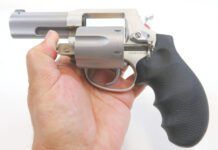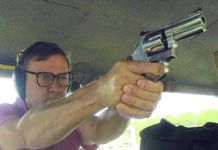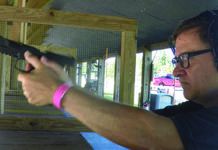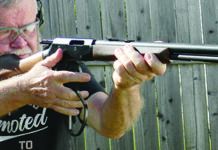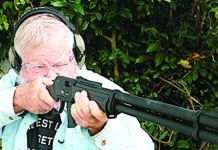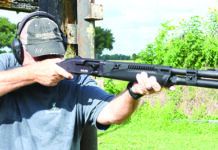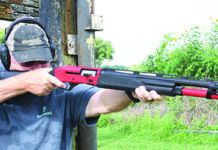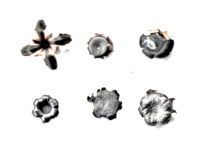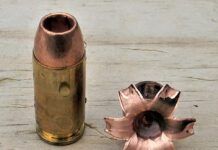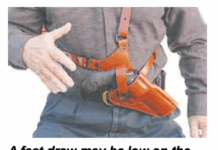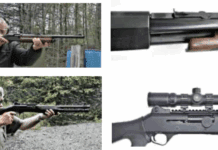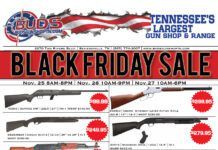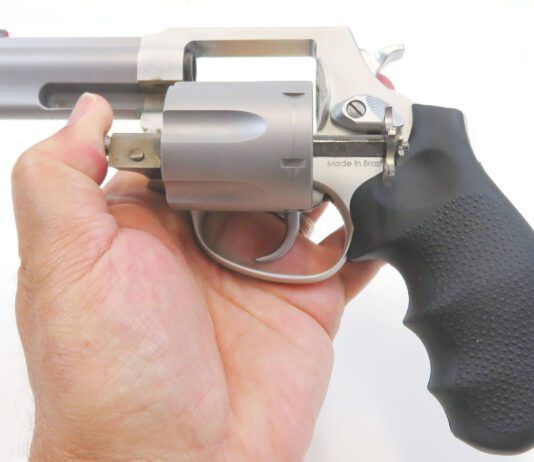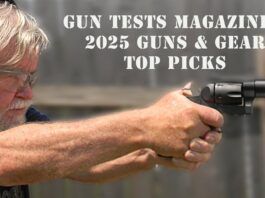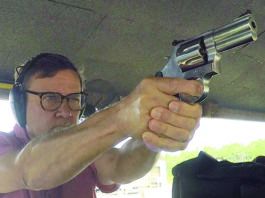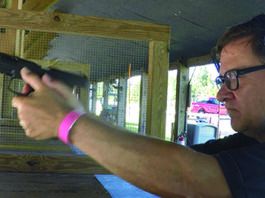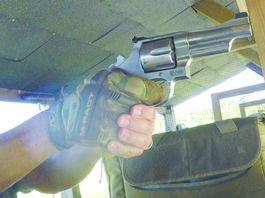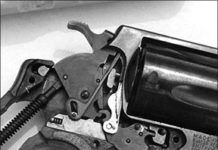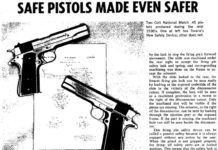Cimarron Evil Roy No. ER4104 357 Magnum, $770
We tested three single-action revolvers suitable for Cowboy Action shooting in an August 2012 showdown. All chambered in the most common CAS competition caliber, 357 Magnum, the choices were the Ruger New Vaquero NV-34 No. 5107, $719; the Heritage Manufacturing Big Bore Rough Rider RR357CH4, $500; and Cimarron's Evil Roy No. ER4104, $770.
UZI Pro Pistols Have Arrived in the U.S.A.
DoubleTap Defense Unveils Two New Calibers
Gun Tests November 2013 Look-Ahead: Galco Shoulder Holsters
New Videos on GunReports.com (October 24)
Gun Tests November 2013 Look-Ahead: Commander Size 1911 Self-Defense Pistols
Video: FMJ vs JHP
Galco Introduces KingTuk IWB holster for Springfield Armory’s XD-S
Revolvers And Springs
When it comes to challenging a shooter nothing does so quite like a snub nose .38 or a lightweight magnum revolver. Each is light, kicks more than other revolvers and the short sight radius makes marksmanship more difficult. There are always folks looking for a shortcut to proficiency but there are no short cuts.
Walther P22 No. WAP22003 22 LR, $379 (2012)
We tested two 22 LR handguns in an April 2012 showdown of plinking pistols. They were the Walther P22 Model WAP22003 22 LR, $379; and the Ruger SR22PB Model 03600, $399. Heres an excerpt of that report.
In a February 2006 test of four handguns, our Idaho staff called the Walther P22 22 LR No. WAP22003, $301, an Our Pick. The test team said, We liked this little .22 pistol immensely. It was completely reliable in our limited shooting, and shot very well, with many five-shot groups going around an inch at 15 yards. The impact could be fine-tuned as necessary by changing the front sight. The windage was slick and handy, we found, and adjusted with relative ease.… We think anyone in need of a fine little .22 pistol that works every time and doesnt bust the bank need look no farther than the short-barrel P22. We thought it was an ideal fun gun, one wed take in the backpack and not even know its there. Then, in the May 2010 issue, we wrote, Our Team Said: The unanimous decision was that the P22 was the top performer in our tests.… This is a difficult trick to manage for any handgun, because differing ammo selections, test conditions, individual pistol variations, and matchups can magnify the flaws found in any product, making it hard to get a top grade again and again.
But when a gun does that well over time, it can serve as a benchmark against which to test newer products, which in this case is the Ruger SR22PB Model 03600, $399. Like the Walther P22 WAP22003, now $379, Rugers SR22 is full of angles and bumps and slots, but not so many serrations. The top of its anodized slide was smooth and semi-gloss, instead of the Walthers dead-flat black with longitudinal serrations. What would have impressed us mightily is if Ruger (or Walther) had attempted to copy the original Walther PPK for the 22LR, and brought it off nicely at a good sale price. No one makes that gun today, so far as we know. (If Ruger or Walther decided to do it, we suspect a great many fans of James Bond would buy the guns just for the fact that they look like the famous PPK. And if this hypothetical gun were far more accurate than either of these two test guns, wed beat a path to the makers door and buy one for ourselves.) But that veers off our current topic, which is pitting the two similar 22 autoloading pistols head to head.
We acquired a new Ruger and borrowed a locally owned, new-condition P22 for this test. We tested with five types of ammunition. These were CCI Green Tag Competition, Eleys Match EPS, CCI Mini Mag solids, Winchester Power Point HP, and Federal Classic High-Velocity. How does the new Ruger stack up against the Walther P22? Lets take a look feature by feature of the winning gun...


